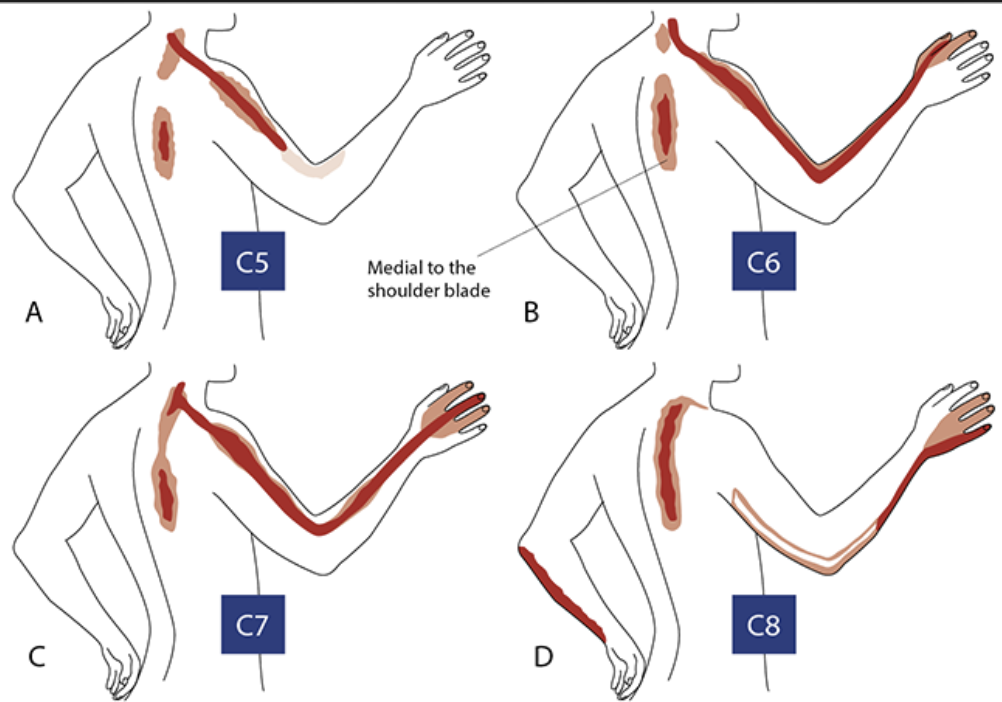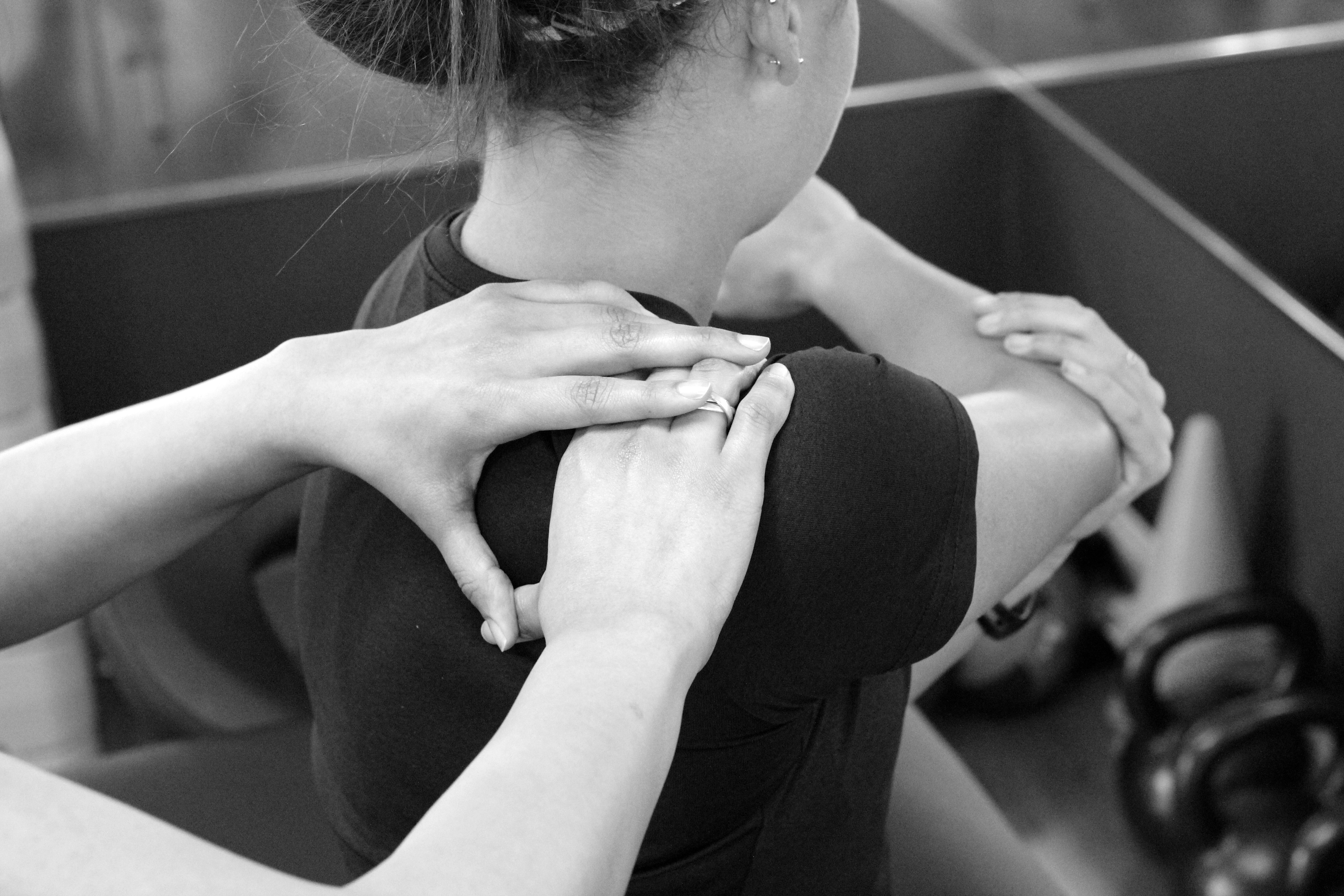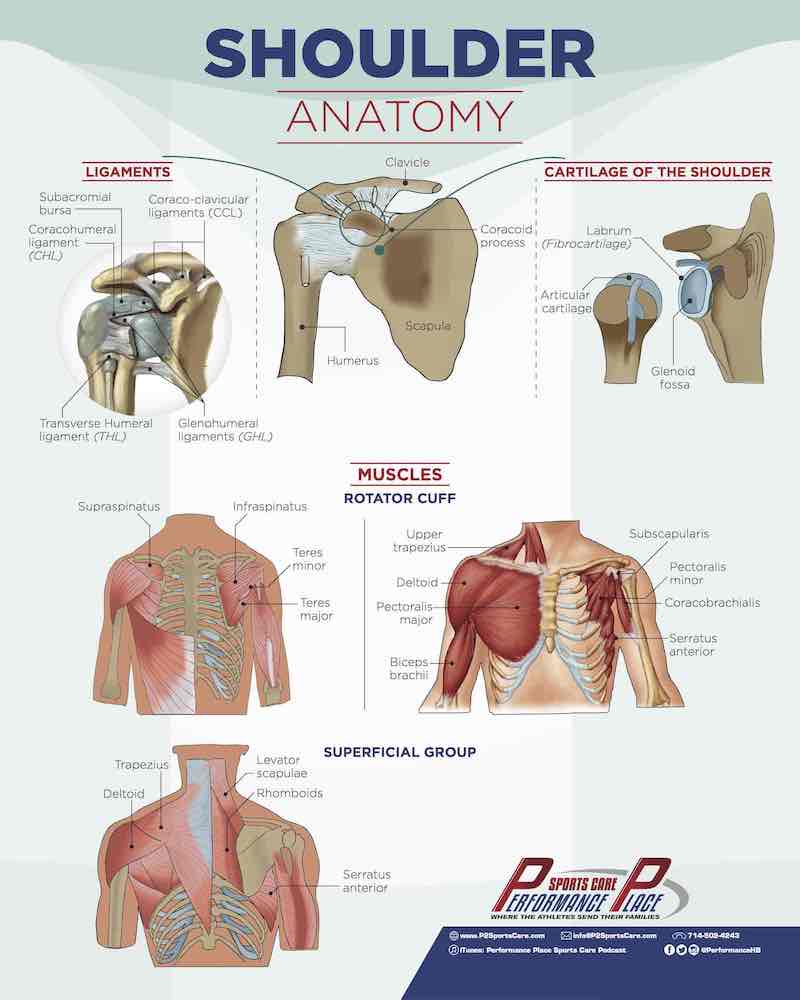This guide will help you learn about SICK scapula in record time.
The best part?
The information in this article about SICK scapula is up to date for 2021.
A lot has changed in the last year but you don’t need to worry about dated information here!
Note: read the disclaimer and always see a doctor first. If you need some help virtually (or in-person) the “Locally World Famous Chiropractors®” at Performance Place Sports Care are ready to work with you!
So without further ado, let’s get started…
SICK Scapula: An Overlooked Cause of Shoulder Pain
Scapula Pain?
Shoulder blade pain (aka scapula pain) most common causes are a muscle strain, referred pain from a cervical nerve root or dorsal scapular nerve. Characterised as a dull ache, burning, stabbing pain in the shoulder blade region or even a “dropped shoulder.” It is treatable, with recovery ranging from weeks to months.
SICK scapula or shoulder dykinesis is a form of shoulder pain created by disorganized movement of the shoulder joint.
Kinesis refers to “motion”, and the prefix “dys” describes something that is “bad, abnormal or difficult”.
In the case of SICK scapula, athletes who repetitively use their arms for overhead motion such as throwing, swimming or swinging a racquet, are all at risk of developing this condition.
Pain may be followed by limited range of motion, and if left untreated, may develop into a more severe shoulder injury.
This article will help explain the anatomy of the shoulder, the features of SICK scapula and the treatments that can be used to correct it.
If you’re interested in what exercises are useful in SICK scapula recovery, I’ve created a mini-guide I call “An Introduction Into The 9 Best Effective Corrective Exercises For SICK Scapula.” It’s on sale this month, so get it while it’s still affordable!
Before you get too deep into the idea that you have SICK scapula, take a look at the symptom chart below. Shoulder blade pain in theses patterns are being mis-diagnosed as SICK scapula.
Theses symptoms are what know as referred patterns. They’re created by minor nerve pressure in the neck.
No, you’re neck doesn’t even need to hurt during the pinching. Minor tightness that you may think is “normal” is very common.
Normal necks should not be tight all the time… stressed or not.
It’s very easy to treat, yet a treatment plan for SICK scapula would be a step in the wrong direction.

To be clear, the plan of attack is different. Other symptoms found in this condition are also very much like SICK Scapula, which is why it’s mis-diagnosed and mis-treated so frequently.
I’d venture to say a strong majority of the “challenging SICK Scapula” cases are really just this… treated with the wrong plan.
– Scapular winging
– Shoulder blade pain/ deep ache
– Neck/ upper trap tightness (minor or major)
– Shoulder pain
– Numbness to the arm or hand (some cases)
If this interests you, please read this article I wrote about it that will help guide you on your journey. I included some tips within.
EXPECTATIONS WHEN YOU
COME SEE US IN COSTA MESA:
MORE THAN 50% IMPROVEMENT WITHIN 4-6 SESSIONS
Most Cases
MORE RELIEF WITH LESS RISK
We Only Use High Reward/Low Risk Treatments
NO RIDICULOUS LONG-TERM TREATMENT PLANS
MORE ATTENTION WITH A SKILLED GUIDE
Even Though our Costa Mesa Chiropractor are Not A "Real Doctor" 🙂
MORE THAN A TYPICAL COSTA MESA CHIROPRACTOR
No Bone Cracking Required To Feel Good
NO QUACKERY
Dr. Gonzales & Costantino Only Uses Current Evidence-Informed Methods
CLICK HERE TO BOOK YOUR APPOINTMENT WITH A COSTA MESA CHIROPRACTOR
I’ll also be giving a few exercises corrections I like to start people with towards the end of the article. You can jump to it here if you don’t want to hear about anatomy and logic about scapula injuries.


 Login
Login Book Now
Book Now


